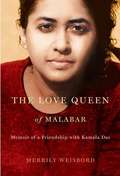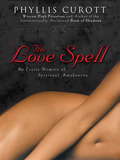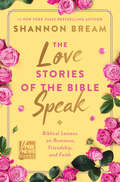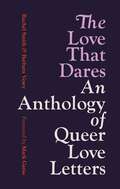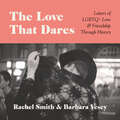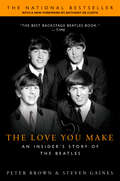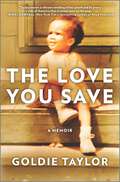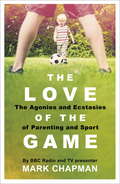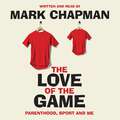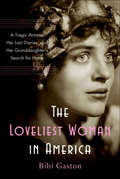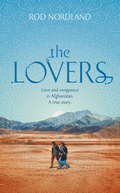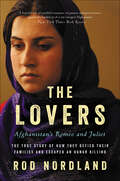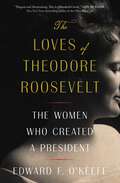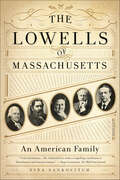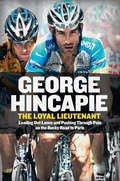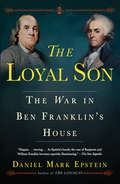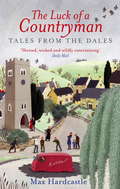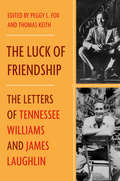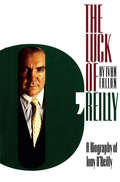- Table View
- List View
The Love Queen of Malabar: Memoir of a Friendship with Kamala Das
by Merrily WeisbordKamala Das (1934-2009) is one of India's most beloved and controversial literary figures. She was hailed and reviled as the first Indian woman to write an autobiographical cult classic about love and desire. Admirers dubbed her, "The First Feminist Emotional Revolutionary of Our Time." The tabloid press called her "The Love Queen of Malabar." Merrily Weisbord found Das's work so compelling that she flew to South India to meet her. The Love Queen of Malabar is the story of their decade-long friendship, an experiment in mutual revelation. Recounting the development of their relationship, Weisbord relates the dramatic events of Das's life, including her transition from celibacy to sexual awakening at age sixty-seven when, provoking the greatest scandal of her notorious life, she converted to Islam for love and renewal. Both observer and direct participant, Weisbord elegantly presents new biographical insights and cultural details about Kerala and India without exoticisation or stereotyping. The Love Queen of Malabar is an evocative and beautifully crafted work, as seamless as the finest novel, and will captivate readers across the globe.
The Love Spell: An Erotic Memoir of Spiritual Awakening
by Phyllis Curott"Curott gives us a glimpse into a passionate lover's journey into sexual magic and freedom of spirit. This exciting life story is an inspiring journey into the soul of love. "--Margot Anand, author of The Art of Everyday Ecstasy In the highly anticipated sequel to her acclaimed memoir, Book of Shadows, Phyllis Curott explores the power of magic to manifest love in a captivating mix of love story, spirituality, Wiccan spell book, and erotica. This is the story of a love spell that worked. Ivy League lawyer and Wiccan priestess Phyllis Curott has a supercharged career in law and filmmaking, but one thing is missing: love. She casts a sexy spell, and her dream lover soon arrives. But he's not who he appears to be and there are unforeseen consequences. In this hip, compelling tale of spiritual and sexual awakening, she must seek the aid of an otherworldly suitor, a daemon, to discover how modern relationships and their problems are paths to the greatest magic of all-true love. This wise and erotic memoir is rich with spells, potions, and rituals for love. The author shares accessible techniques of sexual magic for the accomplishment of personal goals and growth, revealing how sexual ecstasy can lead to the discovery of our innate divinity and an empowered life. BACKCOVER: Advance Praise for The Love Spell "A truly fascinating tale of erotic love. "--Bertrice Small, New York Timesbest- selling author of more than twenty-five historical romances and four erotic novellas "Arouse and awaken the wild woman within! The Love Spellstirs up a magical cauldron of love and hot, sensuous ecstasy. This book is empowering, captivating, savvy, and very sexy!"--Sirona Knight, author of Empowering Your Life with Natural Magic "A story that will speak to every woman who has dreamed of her Prince Charming and who has had her heart broken. A powerful, spiritual narrative, this book will give everyone the tools they need to draw their soulmates to them. "--Jennifer Hunter, author, 21st Century Wicca and Rites of Pleasure "Skillfully intermingling sex and spells, magical techniques and enjoyable prose, Curott returns with a fascinating, highly entertaining read about personal magic as a part of life, love, and empowerment. "--Raymond Buckland, author, The Witch Book, Wicca For One "The Love Spellcasts a spell of its own. An honest, compelling account to which every woman alive can relate! Phyllis Curott's writing feeds the readers' soul. "--New York Timesbestselling Author Maggie Shayne, author of BLUE TWILIGHT "Part relationship analysis, part girlfriend talk therapy, and part step-by-step guidebook, Phyllis' story speaks to all of us who look for our true love. --Lou Paget, International Best Selling Author of How to Be a Great Lover, How to Give Her Absolute Pleasure, and 365 Days of Sensational Sex
The Love Stories of the Bible Speak: Biblical Lessons on Romance, Friendship, and Faith (Fox News Books #7)
by Shannon BreamThe Bible is full of “love” stories. But the Biblical idea of love is so much bigger than we imagine. Love is at the heart of the Bible. From the moment Adam declared Eve “flesh of my flesh”…to the sacrificial love of Joseph for Mary…to the deep friendship of David and Jonathan…to the abounding and never-changing love of God: The Bible is a love story. But it also redefines the way the world tells us we should think about love.The Bible reveals not just butterflies and broken hearts. In Scripture, we see God’s beautiful design for the partnership of marriage. We witness friendships that cross all boundaries. We watch as families navigate the many seasons of life. Our guiding example for them all is the deepest, most abiding, foundational love ever known: God’s unconditional love for His people.In The Love Stories of the Bible Speak, Shannon Bream draws lessons from the good, the bad, and the ugly of Biblical romances, friendships, and families. She shows how God’s love is often very different from ours, turning upside down our assumptions about life, relationships, and each other.The Love Stories of the Bible Speak reminds us that, no matter where we find ourselves, God’s unwavering love will sustain and guide us. These insights into biblical relationships will uplift and encourage you, and reveal new dimensions to the most central Christian duty: to love God and your neighbor.
The Love That Dares: Letters of LGBTQ+ Love & Friendship Through History
by Rachel Smith Barbara Vesey"What this charming, moving and fascinating collection proves is that the [letter] form itself - a scribbled note, a declaration of love, an outpouring of passion, a bitter word - has always been with us." - Mark GatissA good love letter can speak across centuries, and reassure us that the agony and the ecstasy one might feel today have been shared by lovers long gone. In The Love That Dares, queer love speaks its name through a wonderful selection of surviving letters between lovers and friends, confidants and companions. Alongside the more famous names coexist beautifully written letters by lesser-known lovers. Together, they weave a narrative of queer love through the centuries, through the romantic, often funny, and always poignant words of those who lived it.Including letters written by:John CageAudre Lorde Benjamin BrittenLorraine Hansberry Walt WhitmanVita Sackville-WestRadclyffe HallAllen Ginsberg
The Love That Dares: Letters of LGBTQ+ Love & Friendship Through History
by Rachel Smith Barbara Vesey"What this charming, moving and fascinating collection proves is that the [letter] form itself - a scribbled note, a declaration of love, an outpouring of passion, a bitter word - has always been with us." - Mark GatissA good love letter can speak across centuries, and reassure us that the agony and the ecstasy one might feel today have been shared by lovers long gone. In The Love That Dares, queer love speaks its name through a wonderful selection of surviving letters between lovers and friends, confidants and companions. Alongside the more famous names coexist beautifully written letters by lesser-known lovers. Together, they weave a narrative of queer love through the centuries, through the romantic, often funny, and always poignant words of those who lived it.Including letters written by:John CageAudre Lorde Benjamin BrittenLorraine Hansberry Walt WhitmanVita Sackville-WestRadclyffe HallAllen Ginsberg
The Love That Dares: Letters of LGBTQ+ Love & Friendship Through History
by Rachel Smith Barbara Vesey"What this charming, moving and fascinating collection proves is that the [letter] form itself - a scribbled note, a declaration of love, an outpouring of passion, a bitter word -has always been with us." - Mark GatissA good love letter can speak across centuries, and reassure us that the agony and the ecstasy one might feel today have been shared by lovers long gone. In The Love That Dares, queer love speaks its name through a wonderful selection of surviving letters between lovers and friends, confidants and companions. Alongside the more famous names coexist beautifully written letters by lesser-known lovers. Together, they weave a narrative of queer love through the centuries, through the romantic, often funny, and always poignant words of those who lived it.This audiobook is read for you by a cast of sixteen narrators, including members of the Hachette Pride Network. Includes letters written by:John CageAudre Lorde Benjamin BrittenLorraine Hansberry Walt WhitmanVita Sackville-WestRadclyffe HallAllen Ginsberg(P)2021 Octopus Publishing Group
The Love You Make
by Peter BrownHere is the national bestseller that Newsday called “the most authoritative and candid look yet at the personal lives…of the oft-scrutinized group. ” In The Love You Make , Peter Brown, a close friend of and business manager for the band—and the best man at John and Yoko’s wedding—presents a complete look at the dramatic offstage odyssey of the four lads from Liverpool who established the greatest music phenomenon of the twentieth century. Written with the full cooperation of each of the group’s members and their intimates, this book tells the inside story of the music and the madness, the feuds and the drugs, the marriages and the affairs—from the greatest heights to the self-destructive depths of the Fab Four. In-depth and definitive, The Love You Make is an astonishing account of four men who transformed the way a whole generation of young people thought and lived. It reigns as the most comprehensive, revealing biography available of John, Paul, George, and Ringo. Includes 32 pages of rare and revealing photos A Literary Guild® Alternate Selection .
The Love You Save: A Memoir
by Goldie Taylor*A Zibby's Most Anticipated Book of 2023**One of The Root's Most Anticipated Books of January**A Good Morning America Best Book of January?**An Essence Must Read Book of the Year*&“The Love You Save will console and inspire countless people."—J.R. Moehringer, New York Times bestselling author of The Tender BarI Know Why the Caged Bird Sings meets Educated in this harrowing, deeply hopeful memoir of family, faith and the power of books—from acclaimed journalist and human rights activist Goldie Taylor Aunt Gerald takes in anyone who asks, but the conditions are harsh. For her young niece Goldie Taylor, abandoned by her mother and coping with trauma of her own, life in Gerald&’s East St. Louis comes with nothing but a threadbare blanket on the living room floor. But amid the pain and anguish, Goldie discovers a secret. She can find kinship among writers like James Baldwin and Toni Morrison. She can find hope in a nurturing teacher who helps her find her voice. And books, she realizes, can save her life. Goldie Taylor's debut memoir shines a light on the strictures of race, class and gender in a post–Jim Crow America while offering a nuanced, empathetic portrait of a family in a pitched battle for its very soul.Profoundly moving, exquisitely rendered and ultimately uplifting, The Love You Save is a story about hidden strength, perseverance against unimaginable odds, the beauty and pain of girlhood, and the power of the written word.
The Love of the Game: Parenthood, Sport and Me
by Mark ChapmanBBC sports presenter Mark Chapman is no longer in his physical prime. There is an argument to suggest he has never been in his physical prime. Now in his forties, he is facing a world of knee replacements and ever-expanding waistlines, whilst his children are thriving.There is huge pride that they are doing so well, mixed with a fair amount of jealousy that actually they are better at a wide range of sport than he ever was. He is passionate about sport and it has played a huge part in his life. His parents encouraged him from a very early age and he wants to pass the baton on to his son and daughters. Although there is every chance he might drop it and have a massive strop instead. He is also very aware of the huge changes in sport today compared to when he was growing up; and he is determined that his own attitude to his son and daughters' sport - be it football, netball, cricket or gymnastics - will be exactly the same. And he wants to shine a light on grass roots sports - the incredible and largely unsung contribution that volunteers make in the sporting commnity, without whom - for example - no professional footballer would be in the game today.Funny, touching, passionate about sport and parenthood, Mark Chapman paints sport as a touchstone for everything important: growing up, becoming a parent, enjoying family time, getting old, learning how to win (and how to lose gracefully), the legacy we all hope to leave our children; in short, life and all that goes into it.
The Love of the Game: Parenthood, Sport and Me
by Mark ChapmanBBC sports presenter Mark Chapman is no longer in his physical prime. There is an argument to suggest he has never been in his physical prime. Now in his forties, he is facing a world of knee replacements and ever-expanding waistlines, whilst his children are thriving.There is huge pride that they are doing so well, mixed with a fair amount of jealousy that actually they are better at a wide range of sport than he ever was. He is passionate about sport and it has played a huge part in his life. His parents encouraged him from a very early age and he wants to pass the baton on to his son and daughters. Although there is every chance he might drop it and have a massive strop instead. He is also very aware of the huge changes in sport today compared to when he was growing up; and he is determined that his own attitude to his son and daughters' sport - be it football, netball, cricket or gymnastics - will be exactly the same. And he wants to shine a light on grass roots sports - the incredible and largely unsung contribution that volunteers make in the sporting commnity, without whom - for example - no professional footballer would be in the game today.Funny, touching, passionate about sport and parenthood, Mark Chapman paints sport as a touchstone for everything important: growing up, becoming a parent, enjoying family time, getting old, learning how to win (and how to lose gracefully), the legacy we all hope to leave our children; in short, life and all that goes into it.
The Love of the Game: Parenthood, Sport and Me
by Mark ChapmanA brilliant exploration of the relationship between parents and children in sport, written and narrated by MATCH OF THE DAY 2 presenter Mark Chapman.BBC sports presenter Mark Chapman is no longer in his physical prime. There is an argument to suggest he has never been in his physical prime. Now in his forties, his early forties as he is often at pains to point out, he is facing a world of knee replacements and ever-expanding waistlines, whilst his children are thriving.There is huge pride that they are doing so well, but it is mixed with a bittersweet sadness that he will never get his own sporting heyday back. It is also mixed with a fair amount of jealousy that actually they are better than he ever was - and a large amount of sulking that they are now able to beat him at a wide range of sports.He is passionate about sport and it has played a huge part in his life. His parents encouraged him from a very early age and he wants to pass the baton on to his son and daughters. Although there is every chance he might drop it and have a massive strop instead.THE LOVE OF THE GAME is about the constant battle not to become the sporting pariah, the biggest baddie in the world of kids' sport; the nightmare sporting dad. But beyond that it paints sport as a touchstone for everything importance: growing up, becoming a parent, getting old, learning how to win (and how to lose gracefully), the legacy we all hope to leave our children; in short, life and all that goes into it.(p) 2016 Orion Publishing Group
The Love that Keeps Us Sane
by Marc FoleyAnother book for those who love St. Therese of Lisieu, her little way of spirituality.
The Loveliest Woman in America: A Tragic Actress, Her Lost Diaries, and Her Granddaughter's Search for Home
by Bibi GastonHer name was Rosamond Pinchot: hailed as "The Loveliest Woman in America," she was a niece of Pennsylvania governor Gifford Pinchot; cousin to Edie Sedgwick; half sister of Mary Pinchot Meyer, JFK's lover; friend to Eleanor Roosevelt and Elizabeth Arden. At nineteen she was discovered aboard a cruise ship, at twenty-three she married the playboy scion of a political Boston family, but by thirty-three she was dead by her own hand. Seventy years later, her granddaughter, a noted landscape architect, received Rosamond's diaries and embarked on a search to discover the real Rosamond Pinchot.Unearthing what appeared to be a glamorous fairy-tale existence, Bibi Gaston discovers the roots of the ties that bind and break a family, and uncovers the legacy of two great American dynasties torn apart by her grandmother's untimely death. This is a tale of three lives and five generations, mothers and grandmothers, longing, holding on and letting go, men, beauty, diets, and letting beauty slip. This is the story of how we make the most of our brief, beautiful lives.
The Lovely Wanton
by Constance FecherAnne Oldfield's life spanned the end of the 17th century to the beginning of the 18th century. This book covers her roles and her relationships with various colleagues, playwrights and rivals. Also, because she loved and became mistress of a member of the nobility who was a writer and heavily involved with the politics of the time, there is almost more coverage of the politics of the time during the reigns of William (after the so-called Glorious Rebellion when William and Mary replaced James II who had abdicated and fled to France, Queen Anne, his Successor, the last of the Stuart rulers and George I, who succeeded Anne and was the first of the Hanoverian rulers. There were also wars going on at the time: The War of the Spanish Succession, and this affected people with whom Anne, because of her relationship with her lover and the father of her son, Arthur Waynwaring. Was involved. The book is a biography, a love story and a history
The Lovers
by Rod NordlandA riveting, real-life equivalent of The Kite Runner-an astonishingly powerful and profoundly moving story of a young couple willing to risk everything for love that puts a human face on the ongoing debate about women's rights in the Muslim world."She is his Juliet and he is her Romeo, and her family has threatened to kill them both..."This is the heartrending account of Zakia and Mohammad Ali, a couple from opposing Islamic sects, who defying their society's norms have left behind everything they know and are quite literally risking their lives for their love.She is a Sunni, he is a Shia, but as friends from childhood Zakia and Mohammad Ali could never have predicted that their love would anger their families so much that they would be forced to leave their homes finding refuge in the harsh terrain of the Afghani mountains. Without money or passports they rely on the kindness of strangers to house them for a couple of days at a time as they remain on the run, never deterred.New York Times journalist, Rod Nordland, has chronicled the plight of the young lovers telling their extraordinary story of courage, perseverance and love in one of the world's most troubled countries. This moving love story is told against the bigger backdrop of the horrific but widespread practices that women are subjected to in Afghanistan.
The Lovers: Afghanistan's Romeo and Juliet, the True Story of How They Defied Their Families and Escaped an Honor Killing
by Rod NordlandA riveting, real-life equivalent of The Kite Runner—an astonishingly powerful and profoundly moving story of a young couple willing to risk everything for love that puts a human face on the ongoing debate about women’s rights in the Muslim world.Zakia and Ali were from different tribes, but they grew up on neighboring farms in the hinterlands of Afghanistan. By the time they were young teenagers, Zakia, strikingly beautiful and fiercely opinionated, and Ali, shy and tender, had fallen in love. Defying their families, sectarian differences, cultural conventions, and Afghan civil and Islamic law, they ran away together only to live under constant threat from Zakia’s large and vengeful family, who have vowed to kill her to restore the family’s honor. They are still in hiding.Despite a decade of American good intentions, women in Afghanistan are still subjected to some of the worst human rights violations in the world. Rod Nordland, then the Kabul bureau chief of the New York Times, had watched these abuses unfold for years when he came upon Zakia and Ali, and has not only chronicled their plight, but has also shepherded them from danger.The Lovers will do for women’s rights generally what Malala’s story did for women’s education. It is an astonishing story about self-determination and the meaning of love that illustrates, as no policy book could, the limits of Western influence on fundamentalist Islamic culture and, at the same time, the need for change.
The Loves of Theodore Roosevelt: The Women Who Created a President
by Edward F. O'KeefeAn &“elegant and illuminating&” (Jon Meacham) family love story, revealing how an icon of rugged American masculinity was profoundly shaped by the women in his life, especially his mother, sisters, and wives.Theodore Roosevelt wrote in his senior thesis for Harvard in 1880 that women ought to be paid equal to men and have the option of keeping their maiden names upon marriage. It&’s little surprise he&’d be a feminist, given the women he grew up with. His mother, Mittie, was witty and decisive, a Southern belle raising four young children in New York while her husband spent long stretches away with the Union Army. Theodore&’s college sweetheart and first wife, Alice—so vivacious she was known as Sunshine—steered her beau away from science (he&’d roam campus with taxidermy specimens in his pockets) and towards politics. Older sister Bamie would soon become her brother&’s key political strategist and advisor; journalists called her Washington, DC, home &“the Little White House.&” Younger sister Conie served as her brother&’s press secretary before the role existed, slipping stories of his heroics in Cuba and his rambunctious home life to reporters to create the legend of the Rough Rider we remember today. And Edith—Theodore&’s childhood playmate and second wife—would elevate the role of presidential spouse to an American institution, curating both the White House and her husband&’s legacy. A &“graceful and powerful book&” (Candice Millard) filled with &“meticulous research [and] perceptive insights&” (The New York Times), The Loves of Theodore Roosevelt celebrates these five extraordinary yet unsung women who opened the door to the American Century and pushed Theodore Roosevelt through it.
The Lowells of Massachusetts: An American Family
by Nina SankovitchThe Lowells of Massachusetts were a remarkable family. They were settlers in the New World in the 1600s, revolutionaries creating a new nation in the 1700s, merchants and manufacturers building prosperity in the 1800s, and scientists and artists flourishing in the 1900s. For the first time, Nina Sankovitch tells the story of this fascinating and powerful dynasty in The Lowells of Massachusetts.Though not without scoundrels and certainly no strangers to controversy , the family boasted some of the most astonishing individuals in America’s history: Percival Lowle, the patriarch who arrived in America in the seventeenth to plant the roots of the family tree; Reverend John Lowell, the preacher; Judge John Lowell, a member of the Continental Congress; Francis Cabot Lowell, manufacturer and, some say, founder of the Industrial Revolution in the US; James Russell Lowell, American Romantic poet; Lawrence Lowell, one of Harvard’s longest-serving and most controversial presidents; and Amy Lowell, the twentieth century poet who lived openly in a Boston Marriage with the actress Ada Dwyer Russell.The Lowells realized the promise of America as the land of opportunity by uniting Puritan values of hard work, community service, and individual responsibility with a deep-seated optimism that became a well-known family trait. Long before the Kennedys put their stamp on Massachusetts, the Lowells claimed the bedrock.
The Loyal Lieutenant
by Craig Hummer George HincapieGeorge Hincapie is one of the most recognized cyclists in the world--a record seventeen-time Tour de France participant, Olympian, beloved teammate, and celebrated lead-out man for Lance Armstrong. It was his sterling reputation that enabled him to publicly rise above a doping confession that shocked not only the cycling community but the entire sports world when he became a key witness in the case of Lance Armstrong and drugs in cycling. For the first time since that confession, "Big George" reflects on his years as a world-class rider, offering an honest and compelling account of not only a dark period in professional cycling but the demands required of the best in the field. Hincapie's life has been intrinsically tied to the sport he loves. Raised in Queens, New York, in a tight-knit Colombian family, he grew up with his father's love of cycling and the Colombian "cycling warrior" archetype. Chronicling the exhilarating ride of his career, he takes us through his adrenaline-junkie amateur years to the Olympics, going professional, and reaching his true calling as Lance Armstrong's most prized "domestique"--a role in which Hincapie would lead his then best friend to seven straight Tour de France victories. In The Loyal Lieutenant, Hincapie speaks openly about his relationship with Armstrong, which was so integral to both of their successes. He addresses how he himself began doping and why he chose to quit long before the headline-making revelations--and, finally, what led to the testimony that broke Armstrong's case. The Loyal Lieutenant is George Hincapie's story: the per-sonal evolution of a cycling superhero coming clean about his past to, he hopes, help restore honor to the sport he loves.
The Loyal Son: The War in Ben Franklin's House
by Daniel Mark EpsteinThe dramatic story of a founding father, his illegitimate son, and the tragedy of their conflict during the American Revolution—from the acclaimed author of The Lincolns. Ben Franklin is the most lovable of America’s founding fathers. His wit, his charm, his inventiveness—even his grandfatherly appearance—are legendary. But this image obscures the scandals that dogged him throughout his life. In The Loyal Son, award-winning historian Daniel Mark Epstein throws the spotlight on one of the more enigmatic aspects of Franklin’s biography: his complex and confounding relationship with his illegitimate son William. When he was twenty-four, Franklin fathered a child with a woman who was not his wife. He adopted the boy, raised him, and educated him to be his aide. Ben and William became inseparable. After the famous kite-in-a-thunderstorm experiment, it was William who proved that the electrical charge in a lightning bolt travels from the ground up, not from the clouds down. On a diplomatic mission to London, it was William who charmed London society. He was invited to walk in the procession of the coronation of George III; Ben was not. The outbreak of the American Revolution caused a devastating split between father and son. By then, William was royal governor of New Jersey, while Ben was one of the foremost champions of American independence. In 1776, the Continental Congress imprisoned William for treason. George Washington made efforts to win William’s release, while his father, to the world’s astonishment, appeared to have abandoned him to his fate. A fresh take on the combustible politics of the age of independence, The Loyal Son is a gripping account of how the agony of the American Revolution devastated one of America’s most distinguished families. Like Nathaniel Philbrick and David McCullough, Epstein is a storyteller first and foremost, a historian who weaves together fascinating incidents discovered in long-neglected documents to draw us into the private world of the men and women who made America.Advance praise for The Loyal Son “A riveting narrative about the bizarre turmoil between Benjamin Franklin and his son William. The amount of new research undertaken is deeply impressive. And the writing is elegant and always informative. Highly recommended!”—Douglas Brinkley, professor of history, Rice University, CNN presidential historian, and author of Rightful Heritage “This poignant, absorbing portrait of Benjamin Franklin and his son William is a powerful reminder that America’s fight for independence was also an agonizing civil war, in this case pitting a father against his beloved son. In exploring Franklin’s tormented relationship with William, the royal governor of New Jersey, who remained loyal to Britain, Epstein brilliantly illuminates the American Revolution’s tragic human cost.”—Lynne Olson, New York Times bestselling author of Citizens of London and Last Hope Island “Epstein has written a textured, sympathetic account of a fallen founder, William Franklin: patriot, public servant, son, and political partner of Benjamin. Epstein shows, from the inside, his ambitions, yearnings, decisions good and bad, and final, crushing failure.”—Richard Brookhiser, author of Founders’ Son “Epstein tells the story with zest, passion, and compassion.”—John Ferling, author of Whirlwind and Jefferson and Hamilton
The Lucille Ball Story
by James GregoryHer life in public, in private, her triumphs and her troubles, with a never-before-published interview with the famous actress.
The Luck Of A Countryman: Tales from the Dales
by Max HardcastleA vivid and charming portrait of life in the Yorkshire DalesThe enchanting sequel to A Countryman's Lot, which told the story of Max Hardcastle's move to the Yorkshire Dales and the richness of life as an antiques dealer, The Luck of a Countryman contains an array of eccentric characters and curious situations which are guaranteed to delight and amuse. Old favourites reappear in new -- and sometimes alarming -- situations. And a myriad of new personalities join in the ups and downs of life in the Dales.Life is not all plain sailing, but the Hardcastles join in wholeheartedly with the trials and triumphs that beset the peaceful village of Ramsthwaite. How will they ever shift Thievin' Jack's van from the pond? And will the wedding of the year go off smoothly?
The Luck Of A Countryman: Tales from the Dales
by Max HardcastleA vivid and charming portrait of life in the Yorkshire DalesThe enchanting sequel to A Countryman's Lot, which told the story of Max Hardcastle's move to the Yorkshire Dales and the richness of life as an antiques dealer, The Luck of a Countryman contains an array of eccentric characters and curious situations which are guaranteed to delight and amuse. Old favourites reappear in new -- and sometimes alarming -- situations. And a myriad of new personalities join in the ups and downs of life in the Dales.Life is not all plain sailing, but the Hardcastles join in wholeheartedly with the trials and triumphs that beset the peaceful village of Ramsthwaite. How will they ever shift Thievin' Jack's van from the pond? And will the wedding of the year go off smoothly?
The Luck of Friendship: The Letters Of Tennessee Williams And James Laughlin
by James Laughlin Tennessee Williams Thomas Keith Peggy FoxThe chronicle of Tennessee Williams and James Laughlin’s unlikely yet enduring literary and personal relationship. In December 1942, two guests at a Lincoln Kirstein mixer bonded over their shared love of Hart Crane’s poetry. One of them was James Laughlin, the founder of a small publishing company called New Directions, which he had begun only seven years earlier as a sophomore at Harvard. The other was a young playwright named Thomas Lanier Williams, or "Tennessee," as he had just started to call himself. A little more than a week after that first encounter, Tennessee sent a letter to Jay—as he always addressed Laughlin in writing— expressing a desire to get together for an informal discussion of some of Tennessee’s poetry. "I promise you it would be extremely simple," he wrote, "and we would inevitably part on good terms even if you advised me to devote myself exclusively to the theatre for the rest of my life." So began a deep friendship that would last for forty-one years, through critical acclaim and rejection, commercial success and failure, manic highs, bouts of depression, and serious and not-so-serious liaisons. Williams called Laughlin his "literary conscience," and New Directions serves to this day as Williams’s publisher, not only for The Glass Menagerie and his other celebrated plays but for his highly acclaimed novels, short stories, and volumes of poetry as well. Their story provides a window into the literary history of the mid-twentieth century and reveals the struggles of a great artist, supported in his endeavors by the publisher he considered a true friend.
The Luck of O'Reilly: A Biography of Tony O'Reilly
by Ivan FallonFilled with star-studded names from business, politics, and show business - including Nelson Mandela, Paul Newman, Robert Megabee, Paul Jeating, Margaret Thatcher and George Bush - The Luck Of O'Reilly is an important, intimate potrait of a complex, multidimensional man and of international business as it is played by the world's heavy hitters. It is also the story of modern Ireland, and its new place in the world.
